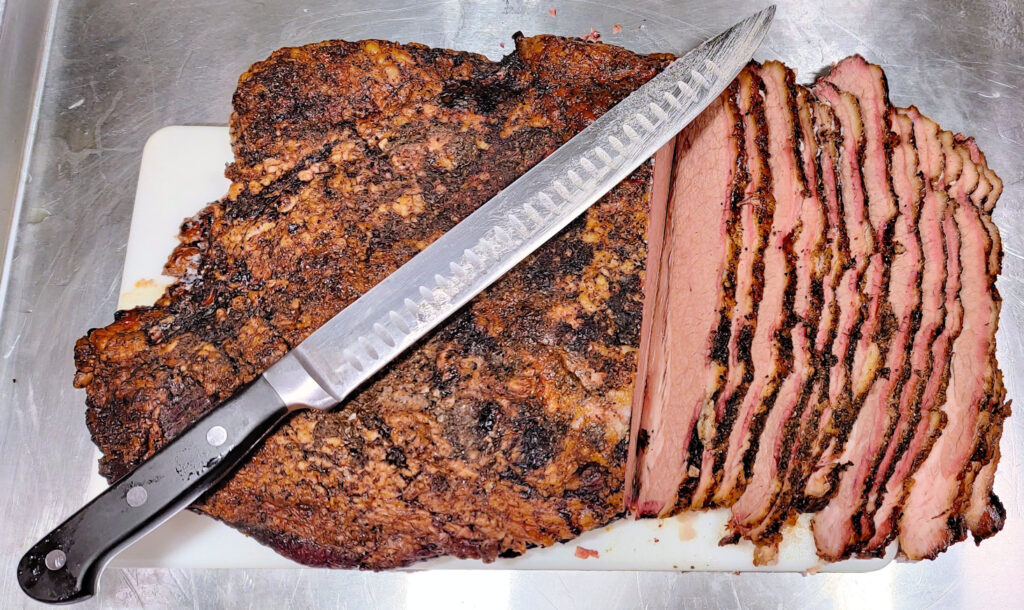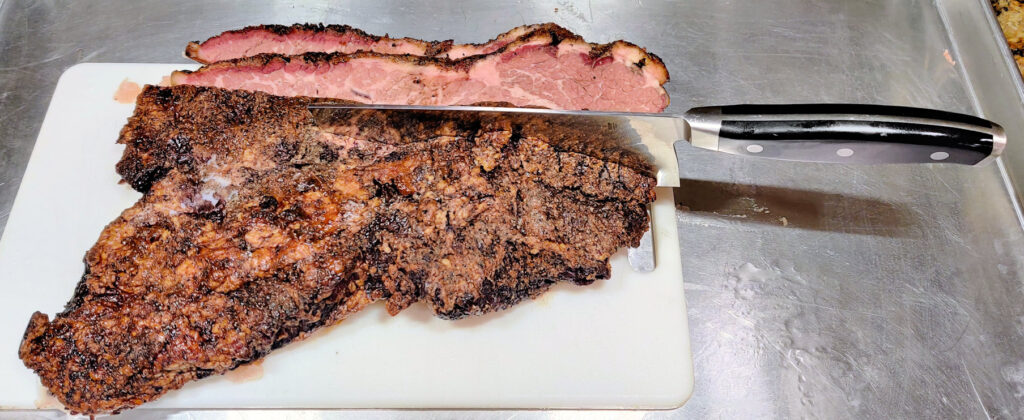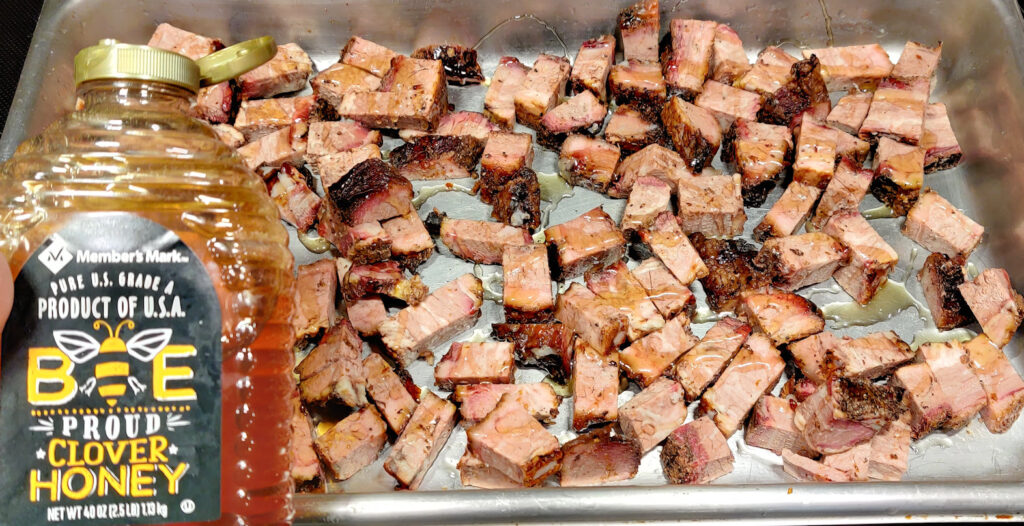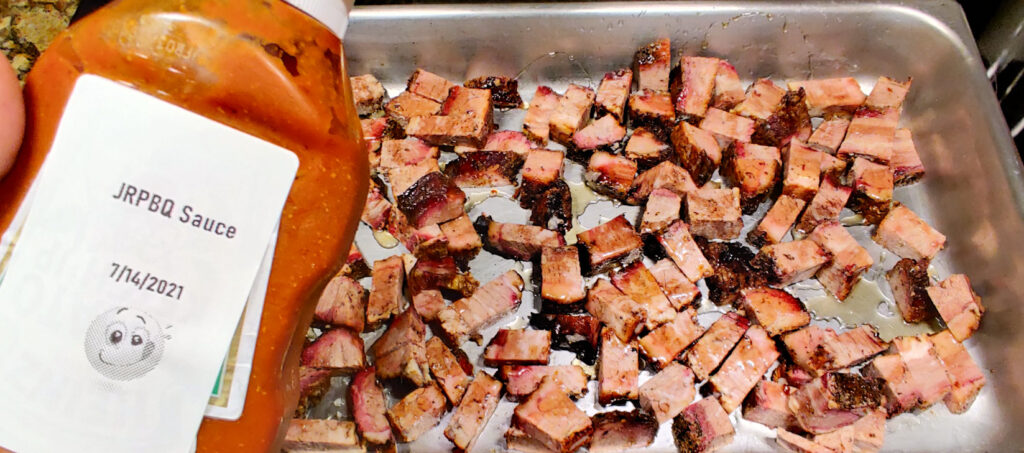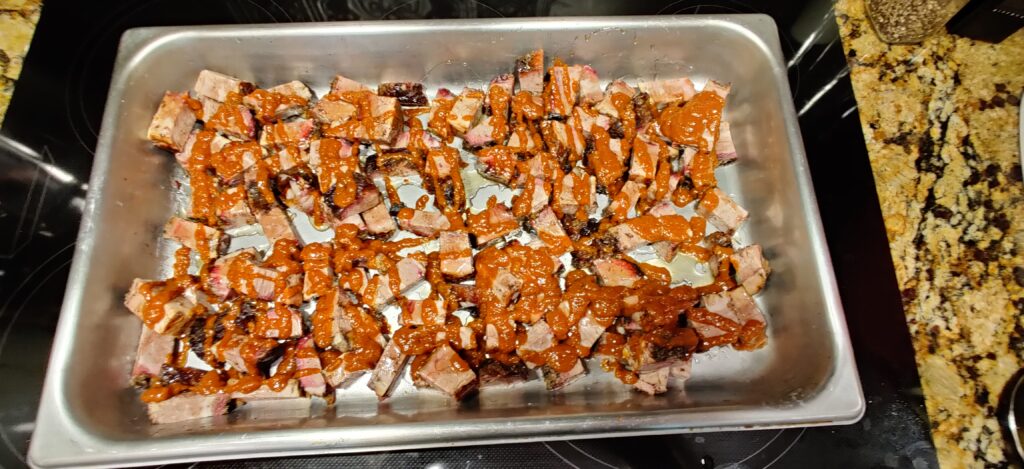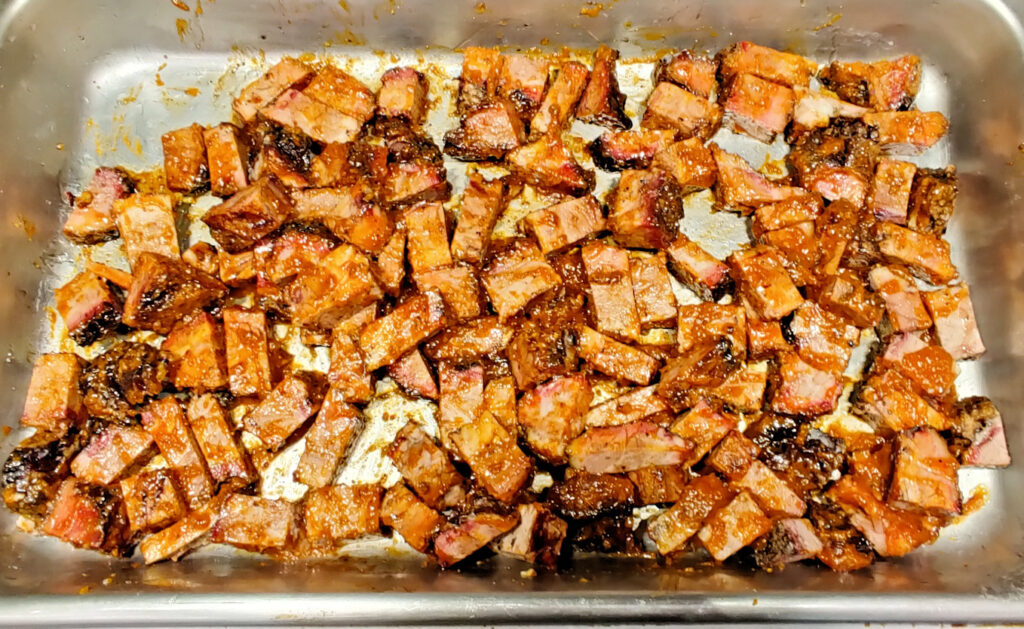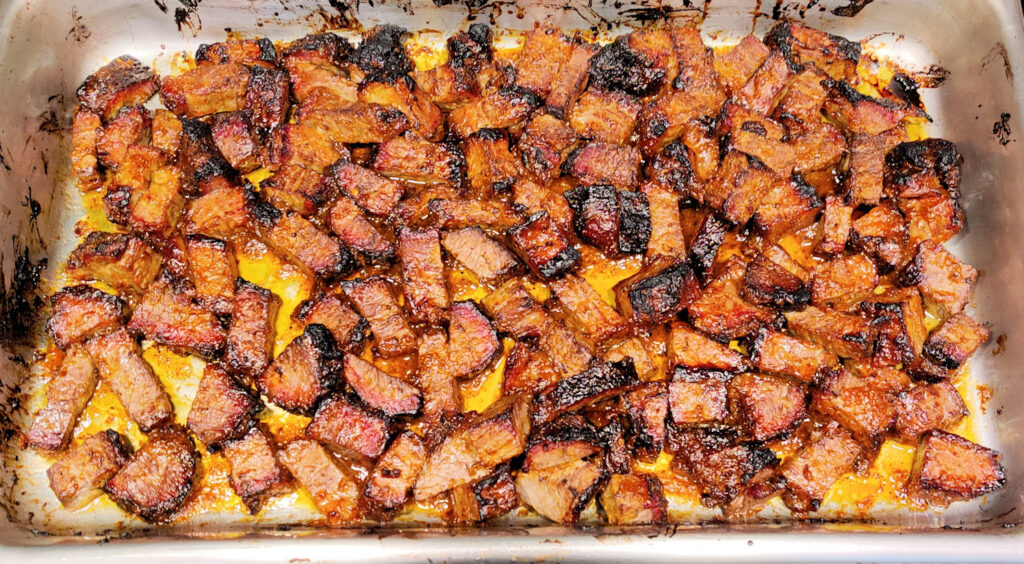Notes:
This is my attempt to cook a full packer brisket into sandwich slices and burnt ends.
Every time I try to cook a whole brisket, the flats seem juicy when I pull the brisket from the grill but after slicing them, they become dry and crumbly.
The problem with cooking the whole brisket together is some portions will be approximately 1.5 inches thick and other portions may be over 4 inches thick. There is no way to keep from overcooking the thinnest portions before the thicker portions are done.
Also, the flat should be cooked to about 200 degrees Fahrenheit and the point or deckle should be cooked a few degrees more (203 – 205). When you cook the brisket together, you will get the opposite result.
Myth Busting (things I think are illogical):
- Adding a water pan makes moister meat. I call B.S. – (no offense Aaron Franklin. Water pans add a little humidity, but they also add thermal mass. If your smoker has a hard time regulating temperature, a water pan may help. My pellet smoker keeps temperatures within about 3 degrees either side of the set temperature, so I don’t need one.
- Injecting the meat will make it moister. B.S. – It may help you get seasonings into the meat, but the moisture probably does not distribute into the meat evenly. A lot leaks out in the refrigerator. And it won’t help you if you overcook your meat.
- Cooking the flat and the point together makes the meat “self-basting”. B.S. – or maybe So What? Alton Brown proved years ago that browning the outside of the meat does not “seal in” the moisture.
- Also, we are going to wrap the meat at the beginning of the stall to retain moisture and reduce the cooking time.
Overview:
I am going to try and cook the flat and the deckle separately. The flat has a uniform thickness and should cook evenly. The point / deckle isn’t uniform but it is very fatty so it can withstand overcooking along the edges.
Separating the Flat from the Point:
The flat and the point are two different muscles, held together with a fat layer. The easiest way to know where to start separating the two is to look along the edge of the meat for the large, hard, white fat chunk and begin cutting inside it. When your knife reaches meat on either side, move your cut back toward the fat.
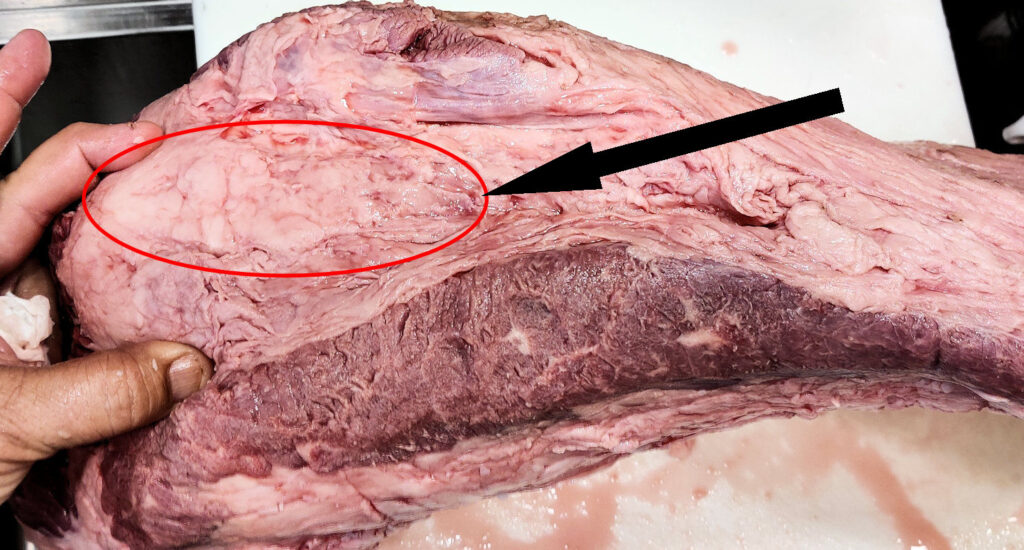
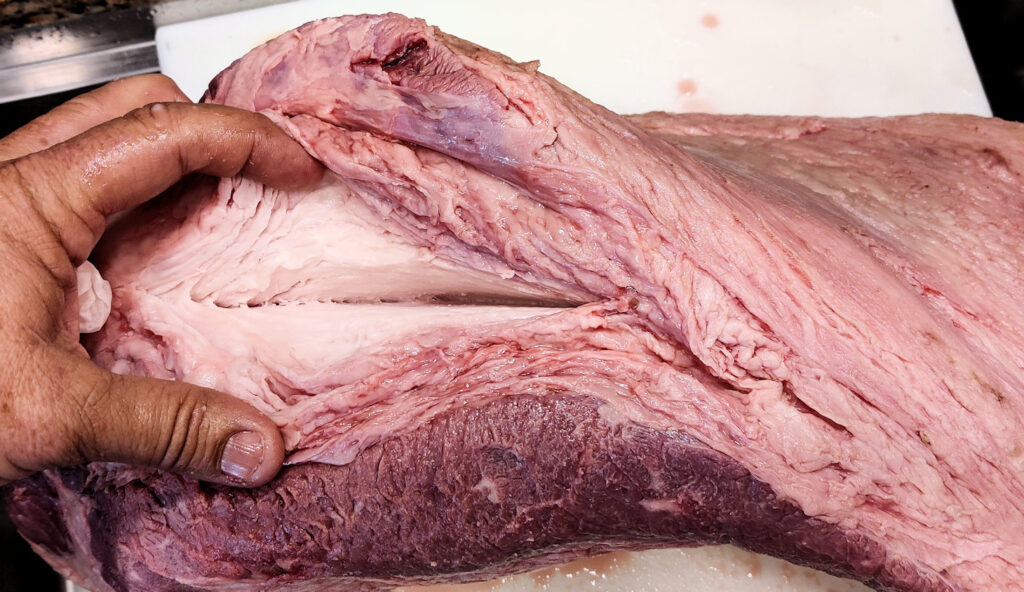
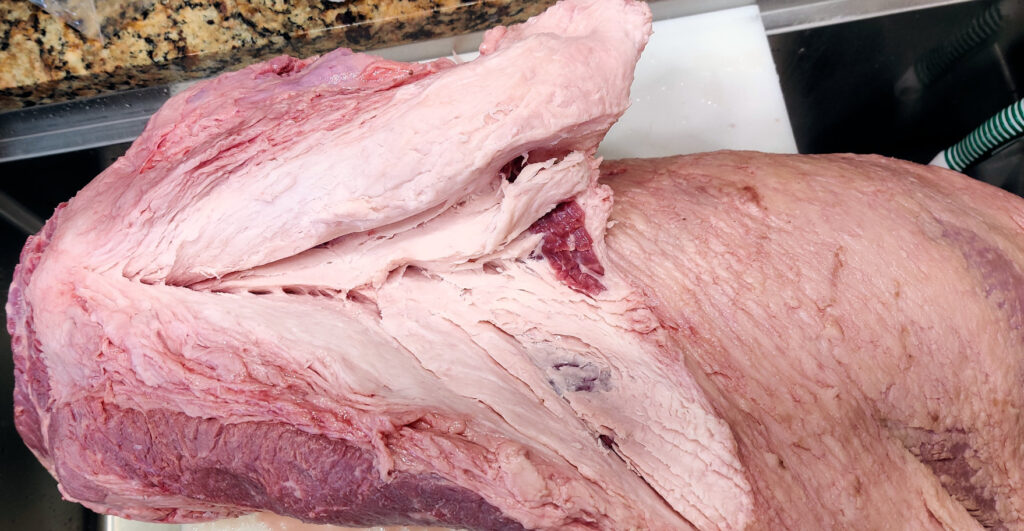
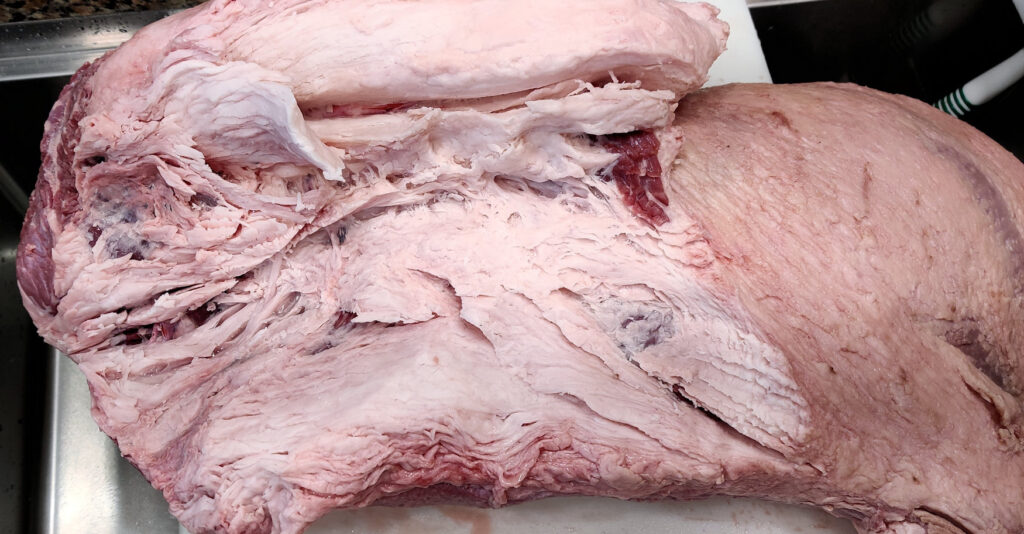
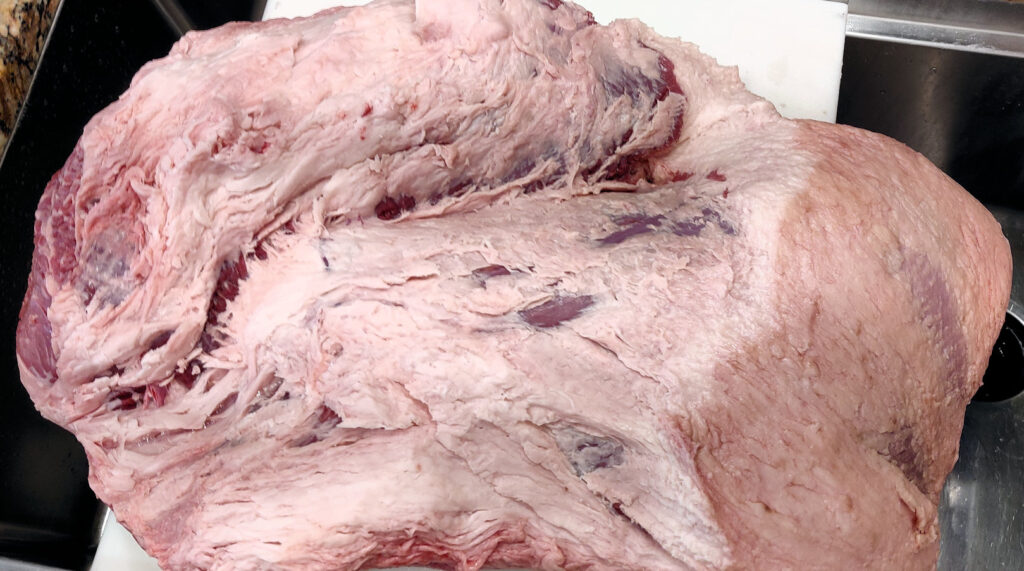
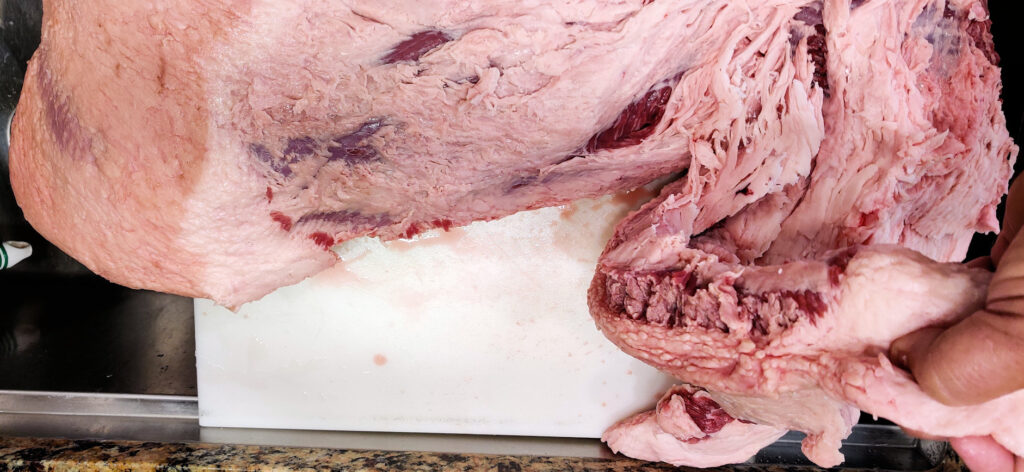
Trimming the pieces:
We are going to try to expose most of one side of the meat and leave at least 1/4″ of fat on the other side. The exposed side will be seasoned, and the fat side will rest against the grill and protect the meat.
The sides we will season will be the sides that were cut apart from each other. The fat sides will be the sides that used to be on the outside of the brisket.
- Once you get the flat and point separated, you want to cut off most of the hard white fat leaving no more than 1/4-inch thickness.
- Also trim off anything that looks like skin or anything else unappetizing.
- On the seasoned sides, score through any remaining fat to allow the seasoning to penetrate.
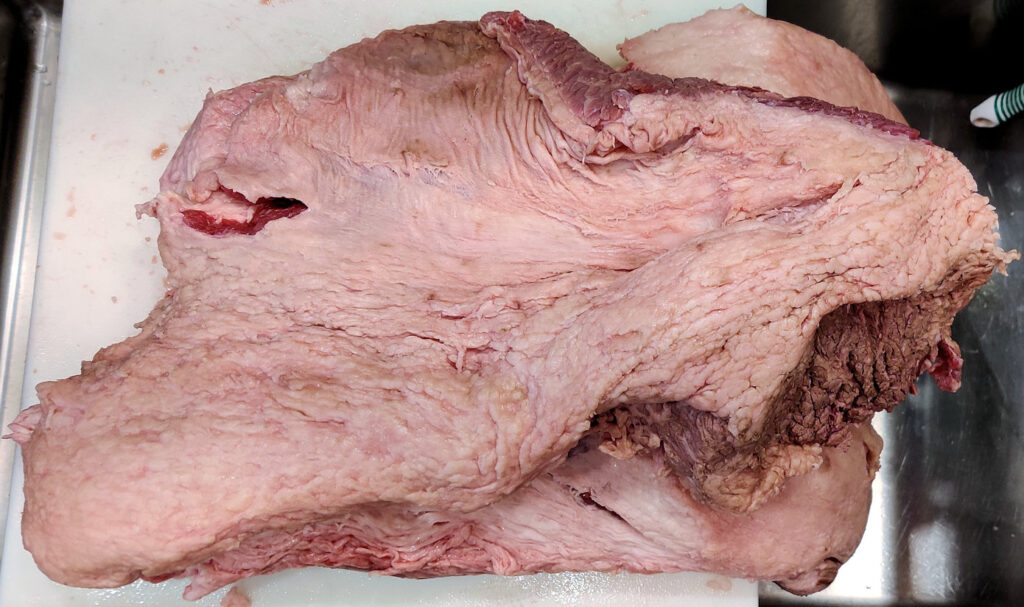
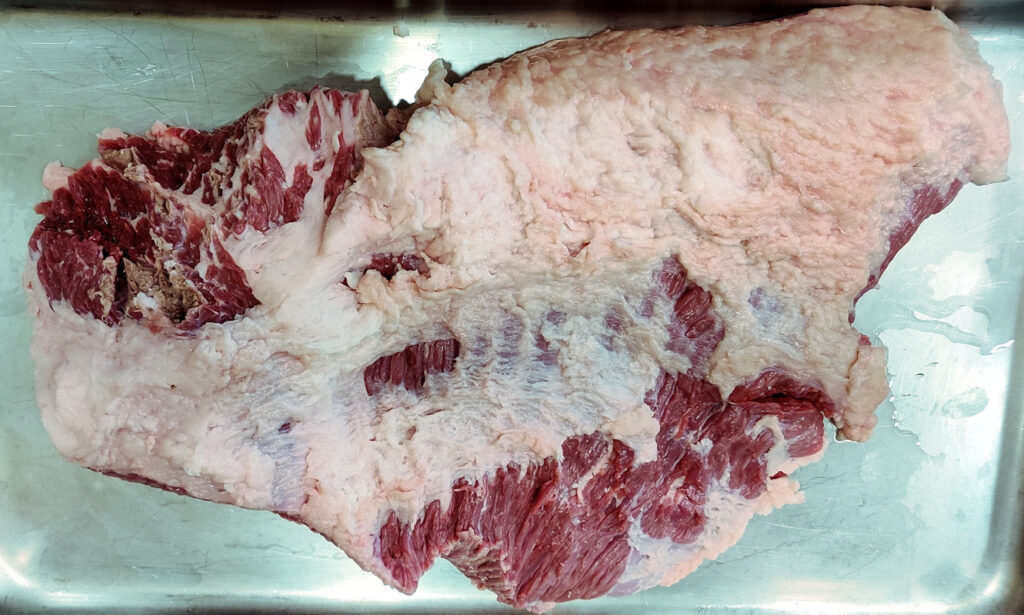
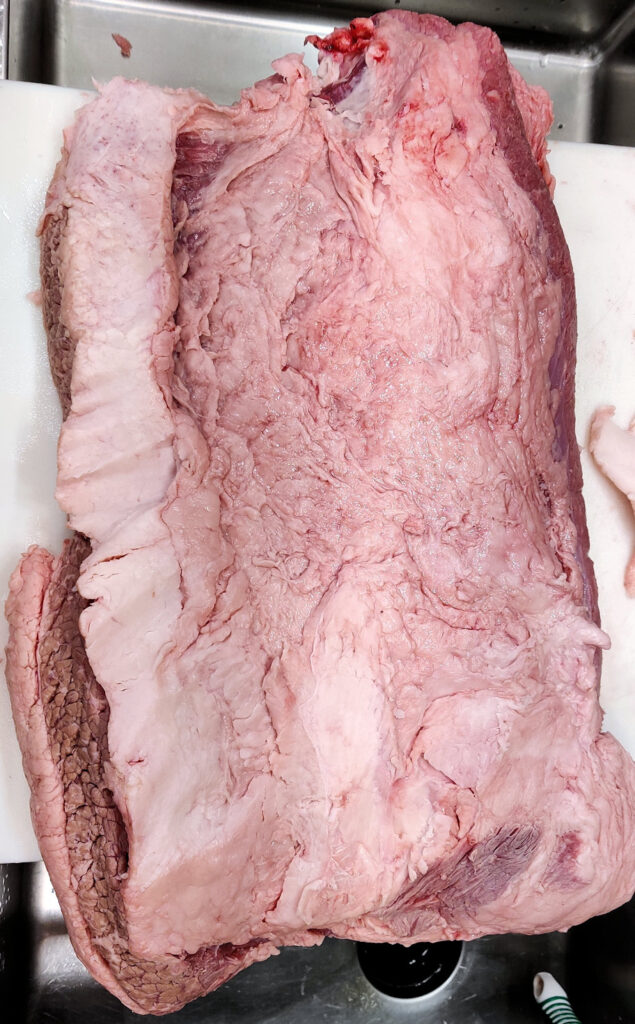
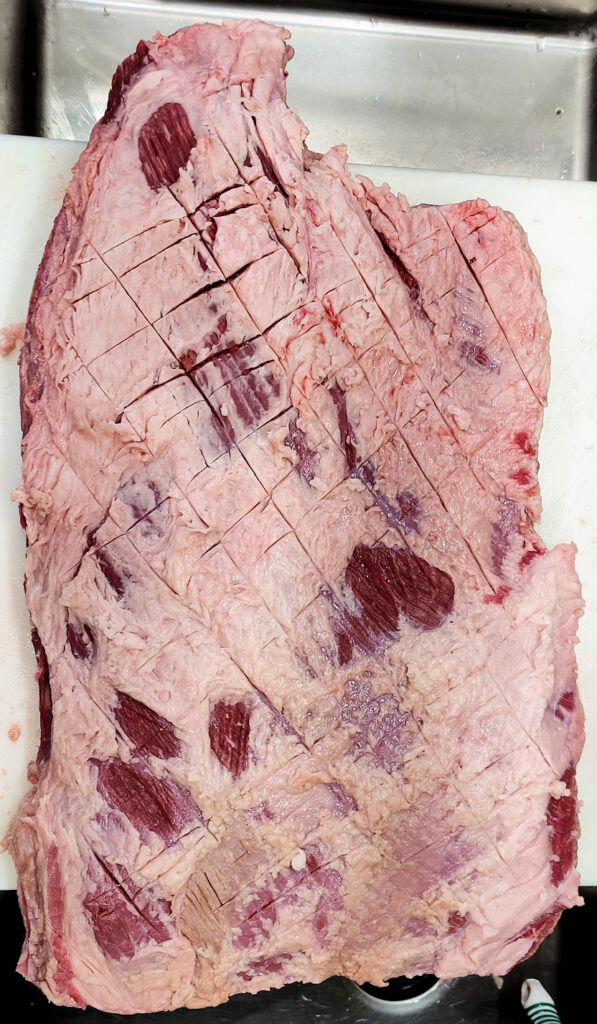
Seasoning:
- Spread the scored side with honey then sprinkle heavily with Randy’s Beefy Rub or your favorite rub.
- Don’t bother seasoning the fat side. It won’t absorb through and will just drip off.
- I don’t think you need to refrigerate it overnight or do any other tricks. Just throw it in the smoker.
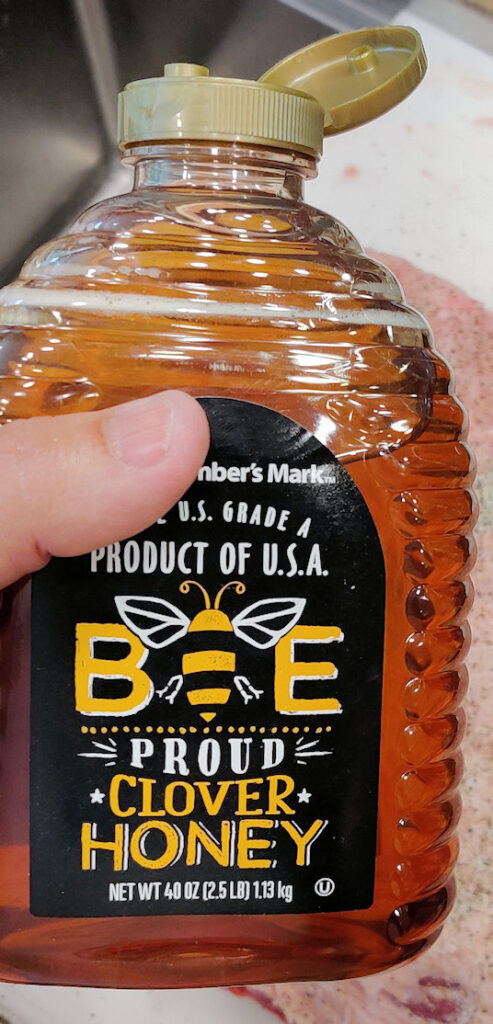
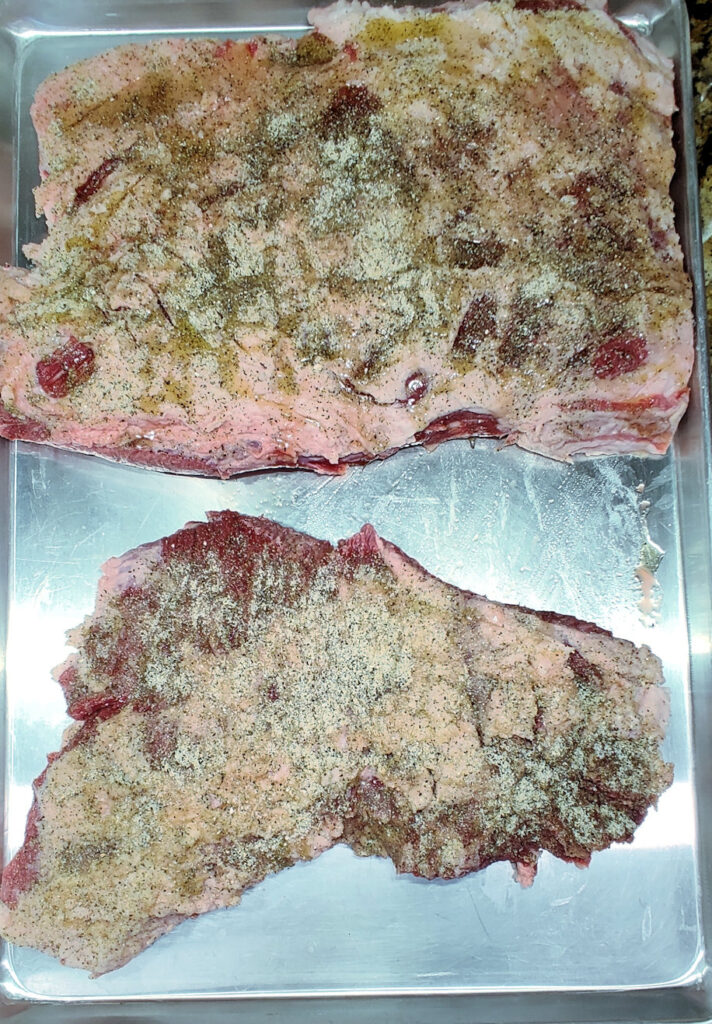
Smoking Before the Stall Temp:
- Smoke at 235 until the internal temperature reaches 165 (May need to change this to 160 because fattier parts stall sooner).
- Remove the meat from the smoker.
- Cut two pieces of butcher paper about 4 ft long.
- I don’t think the color of the paper matters (Sorry Aaron Franklin).
- Lay the paper in an “L” pattern.
- Spray the top layer of butcher paper with nonstick cooking spray like Pam.
- Wrap the top layer around the meat tightly followed by the bottom layer.
- Fold the exposed tabs of paper under the meat.

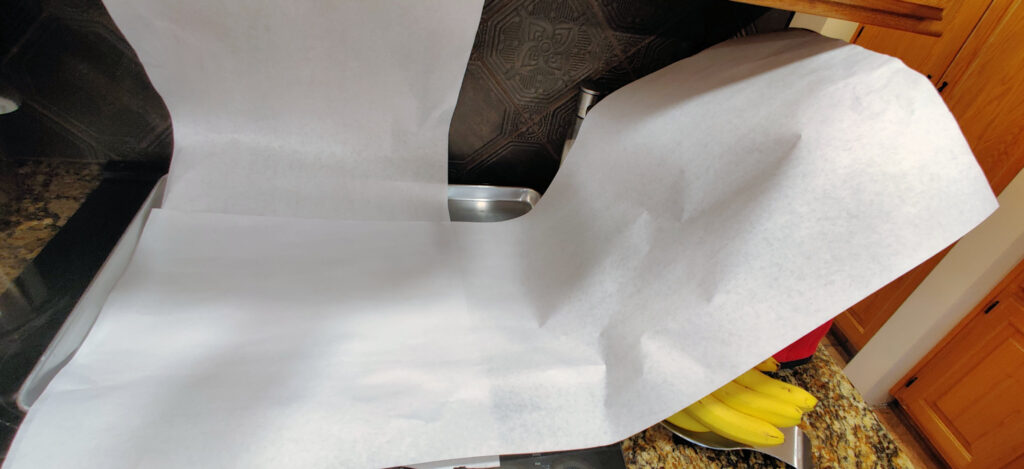
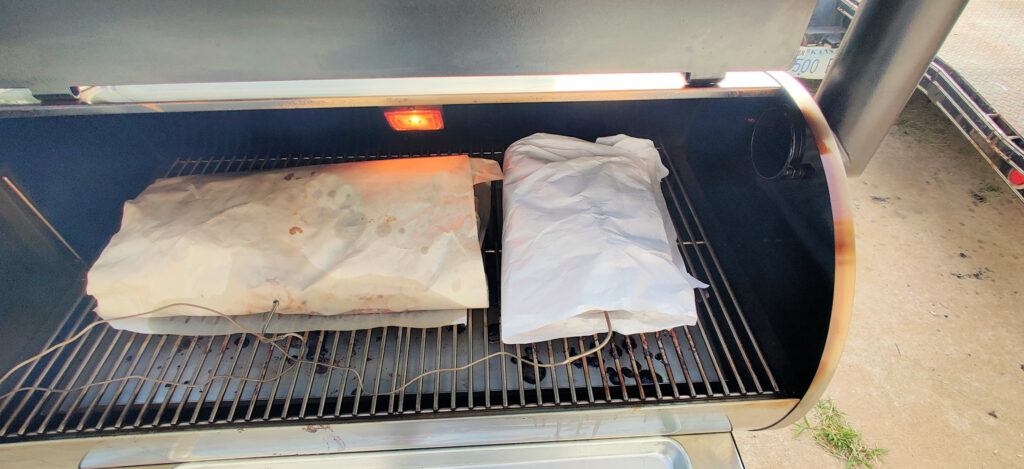
Smoking After the Stall Temp:
- Return the meat to the smoker and insert a meat probe to measure the internal temperature.
- A few minutes before your meat reaches the desired temperature, turn on your kitchen oven to its lowest setting (probably about 170 degrees).
- When the oven reaches temperature, turn it off.
- When the flat reaches 200 degrees, remove it from the smoker and place it (still wrapped) in the warm oven. (this method saves your cooler and your towels from smelling like smoke and makes your wife much happier).
- When the point reaches 205 degrees, remove it from the smoker and place it in the warm oven.
- Leave both pieces in the oven to rest for between 1 and 3 hours.
Finishing:
- It is easier to slice the brisket if it is already chilled.
- Slice the flat perpendicular to the grain about 1/4-inch thick. Other sites say the width of a number 2 pencil (which has a hexagonal height of 1/4-inch).
- I also sliced the flat in half, lengthwise before packaging it in 1 lb. vacuum bags.
- Chop the point in to 3/4″ or larger chunks.
- Drizzle with honey.
- Drizzle with your favorite BBQ sauce (I like BBQ Sauce – JRP’s Tangy Caribbean).
- Toss the meat with a wooden spoon to coat it evenly.
- Place it in a tray in the oven at 250 degrees for 30 minutes.
- Toss the meat again to coat evenly.
- Place it back in the oven on the top rack on Low Broil for 5 minutes.
